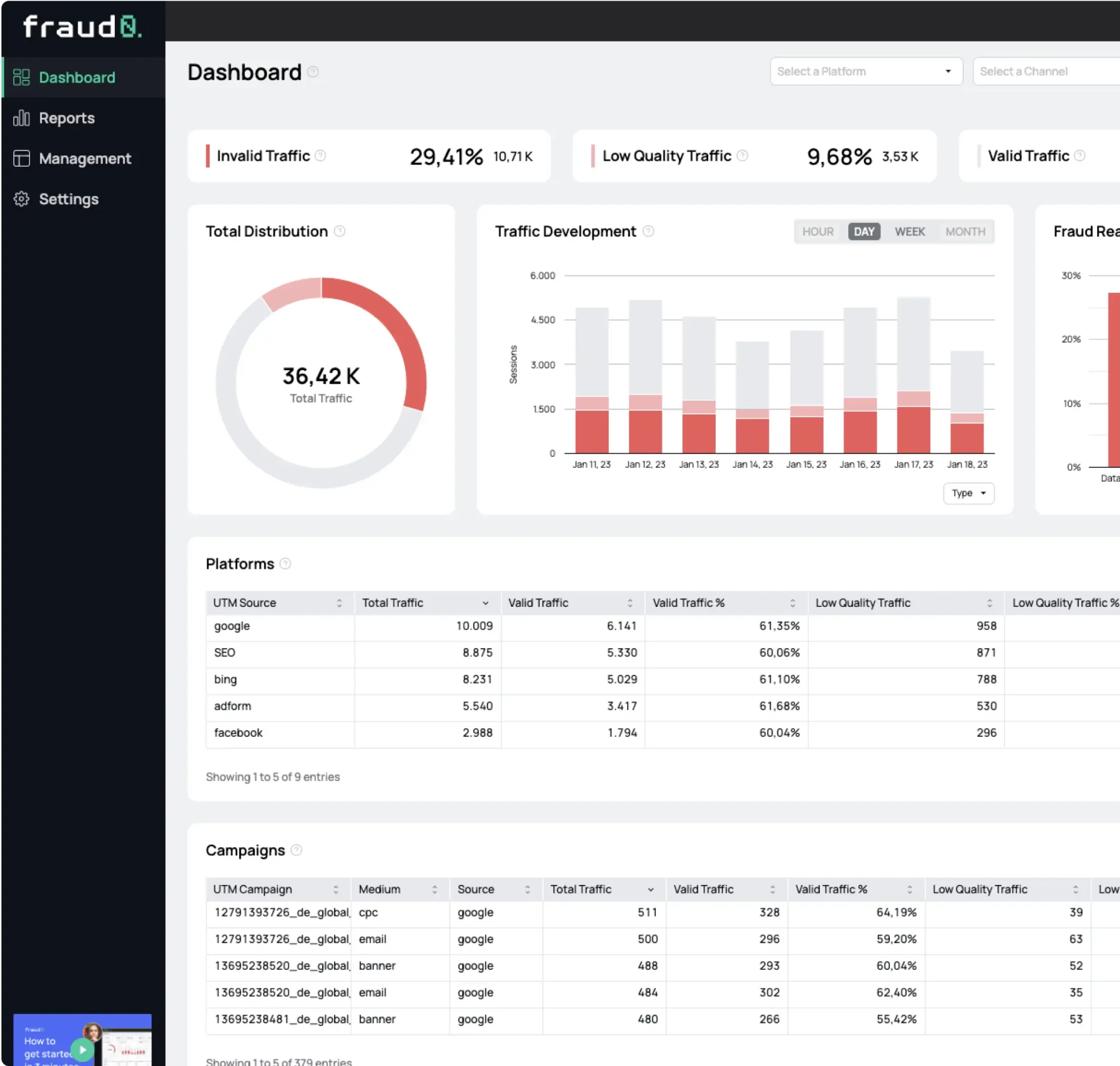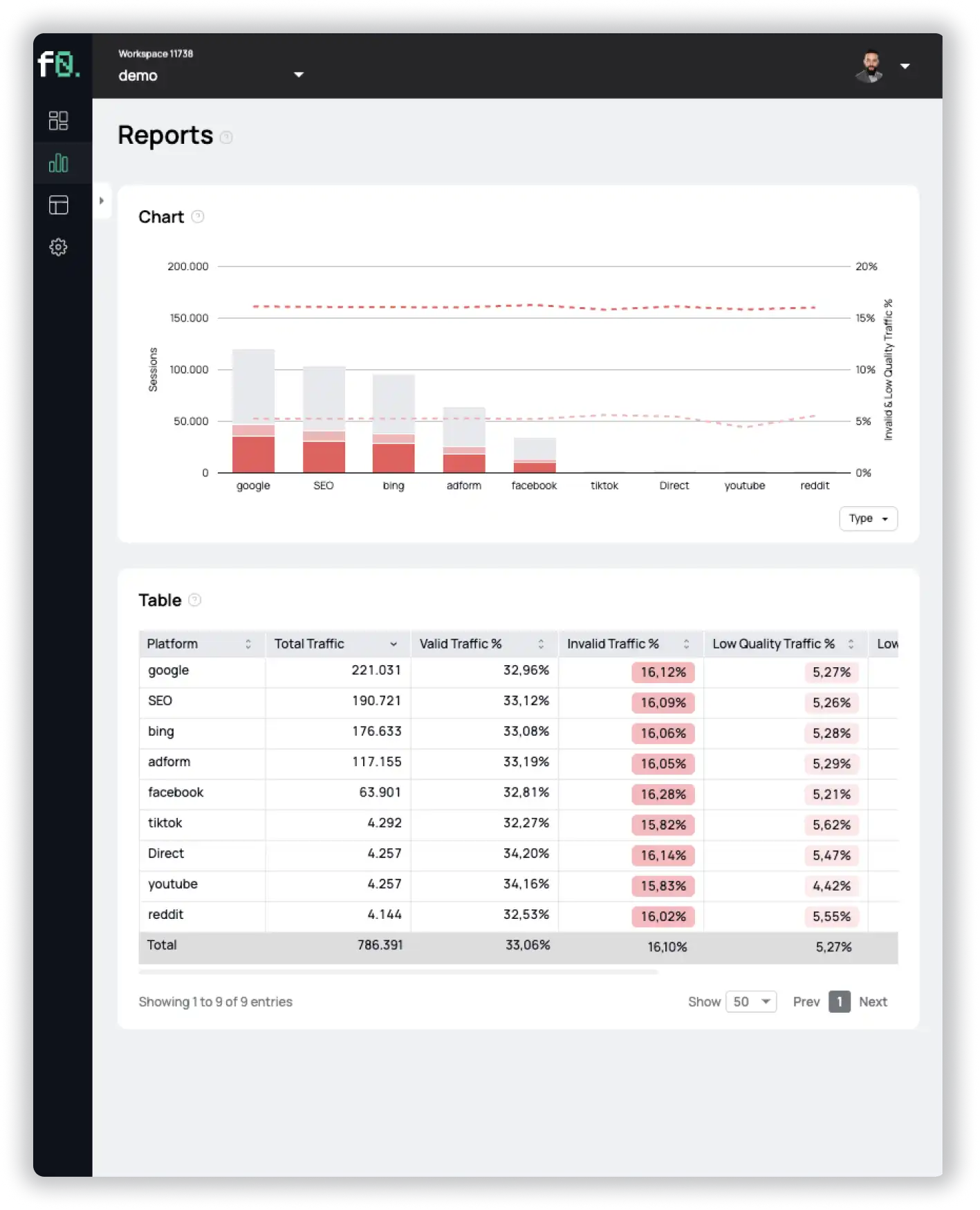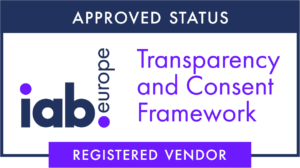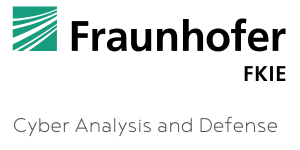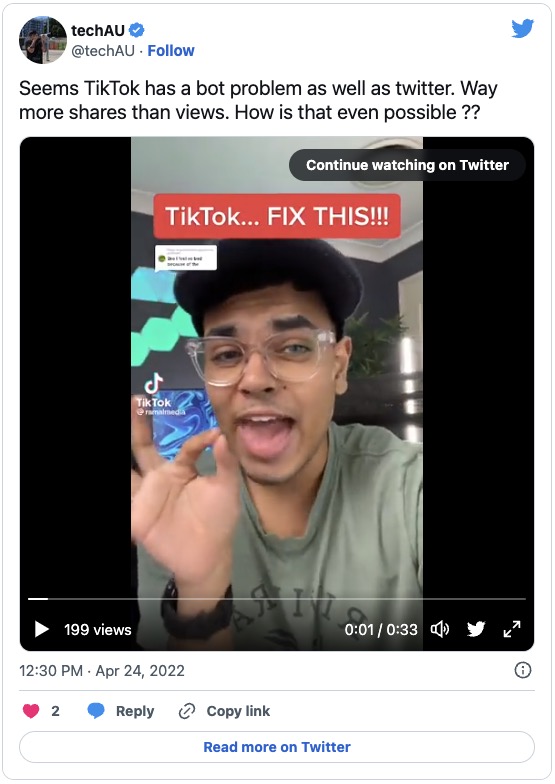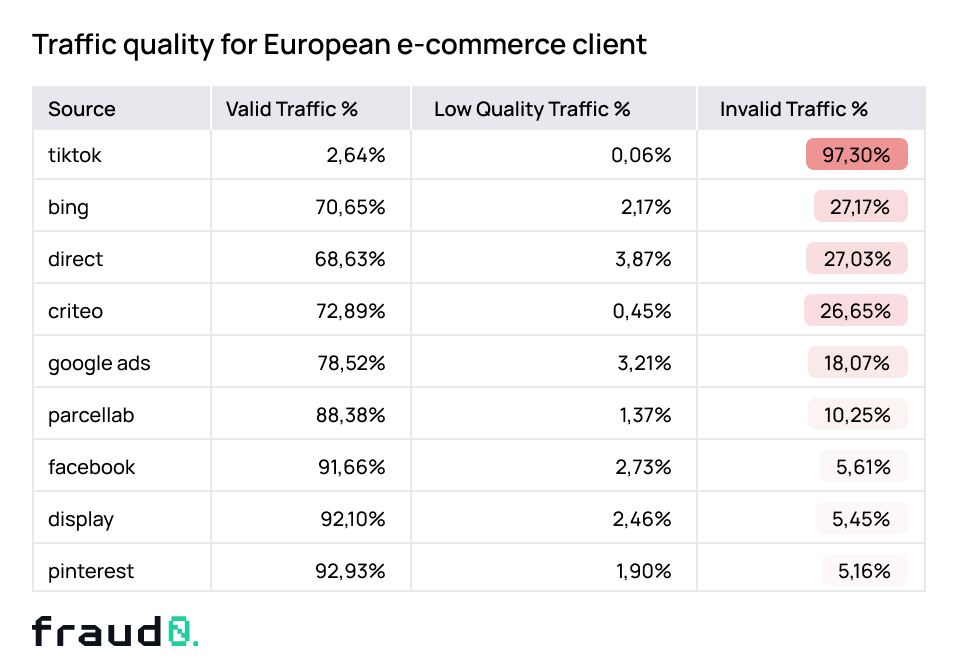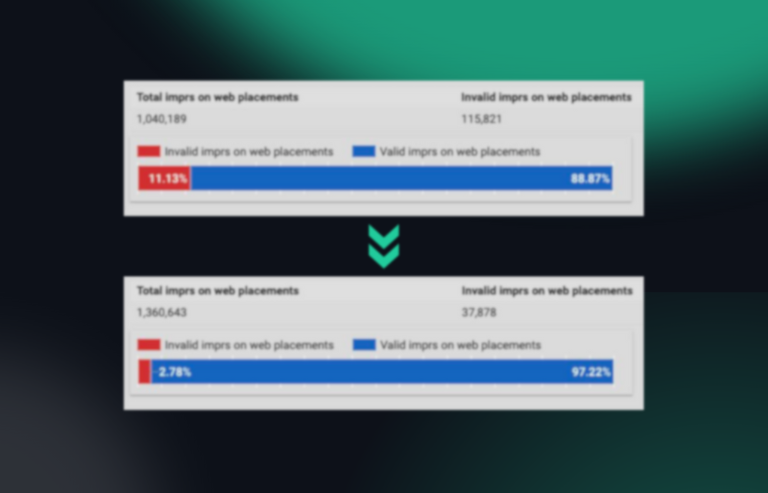- Blog
TikTok’s massive problem with bots, fake accounts and scam

Oliver Kampmeier
Cybersecurity Content Specialist
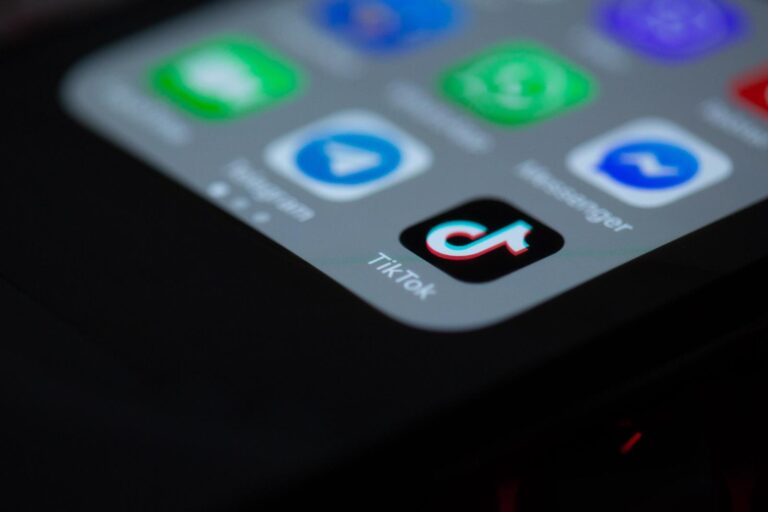
Update April 2023
We have updated the article with the latest figures on deleted content on TikTok.
The number of deleted fake accounts increased by an incredible 1,200% in 2022 compared to 2021!
All other figures can be found further down the article in the corresponding section.
Hardly any other company has been in the media as often as TikTok in the last few years. From a rocket-like rise to the top of all app store lists, to viral music videos on a continuous loop, to conspiracy theories about the involvement of the Chinese government. TikTok is a phenomenon unlike any other.
But how real is TikTok under the surface? How many of the 1 billion monthly active accounts are actually people and how many are fake accounts or bots?
Initial analysis from us shows a clear picture: up to 97% of all traffic coming through TikTok could be detected as automated bot requests by our software. These are frightening figures that cost many advertising companies a lot of money and waste their ad spend.
In the following article, we want to take a closer look at TikTok and its major problems with scam and fake accounts.
The rise of TikTok
Founded in Shanghai in 2014 as an online learning platform for short 3-5 minute videos, Musical.ly initially failed to attract much attention. A refocus on teenagers who like to make lip-synching music videos of themselves finally brought the hoped-for success. By July 2015, the app was already more popular than Facebook and Instagram in the iOS App Store, and a year later it already had over 70 million downloads.
Around the same time, Chinese developer Bytedance released its new social media app Douyin. Within a year, it gained over 100 million users who consumed over 1 billion videos a day. For international success, the app was renamed TikTok in mid-2017 and was able to climb to the top of the app charts in many countries within a very short time.
To continue expanding in the U.S. teen market, Bytedance bought Musical.ly for an unspecified amount in late 2017 and merged the two apps under the TikTok name. From that point on, TikTok has been on an unprecedented growth trajectory, gaining over 1 billion users in less than 4 years, growing faster than any other social media network ever before. To put it in perspective: TikTok attracted more users in 1.5 years than Twitter did in its entire 16-year history.
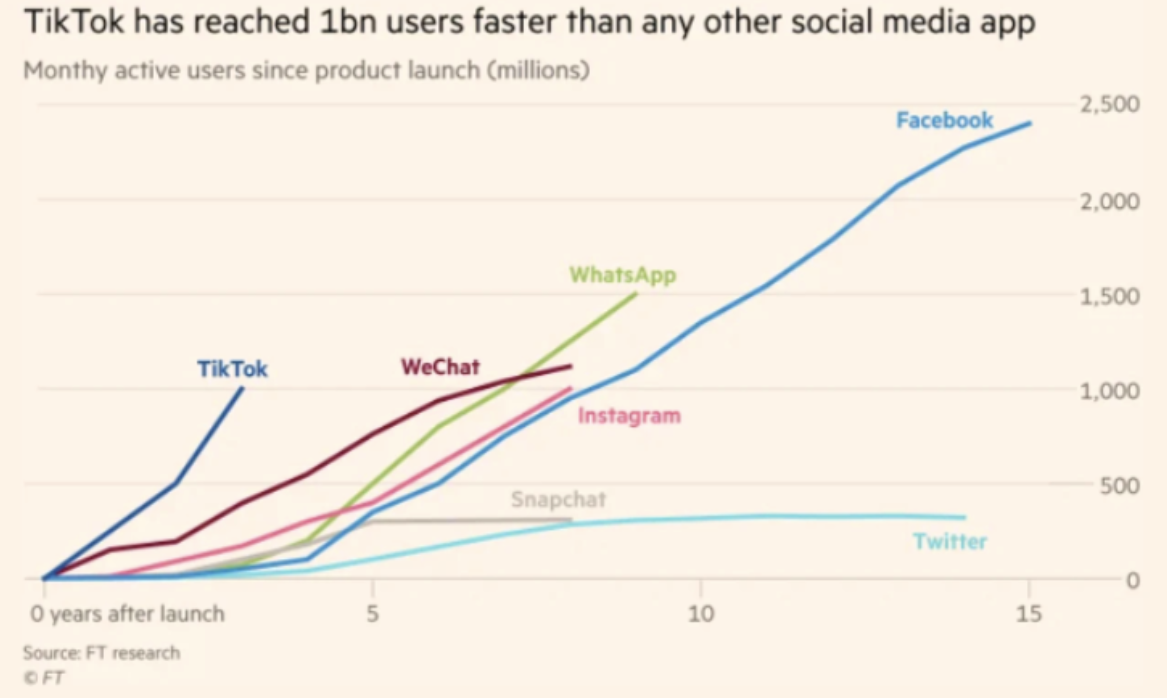
It hit the zeitgeist of Gen Z and has dominated the app charts on both iOS and Android devices for years, becoming the fifth app (and the only one not from Meta) to break the magic 3.5 billion downloads threshold.
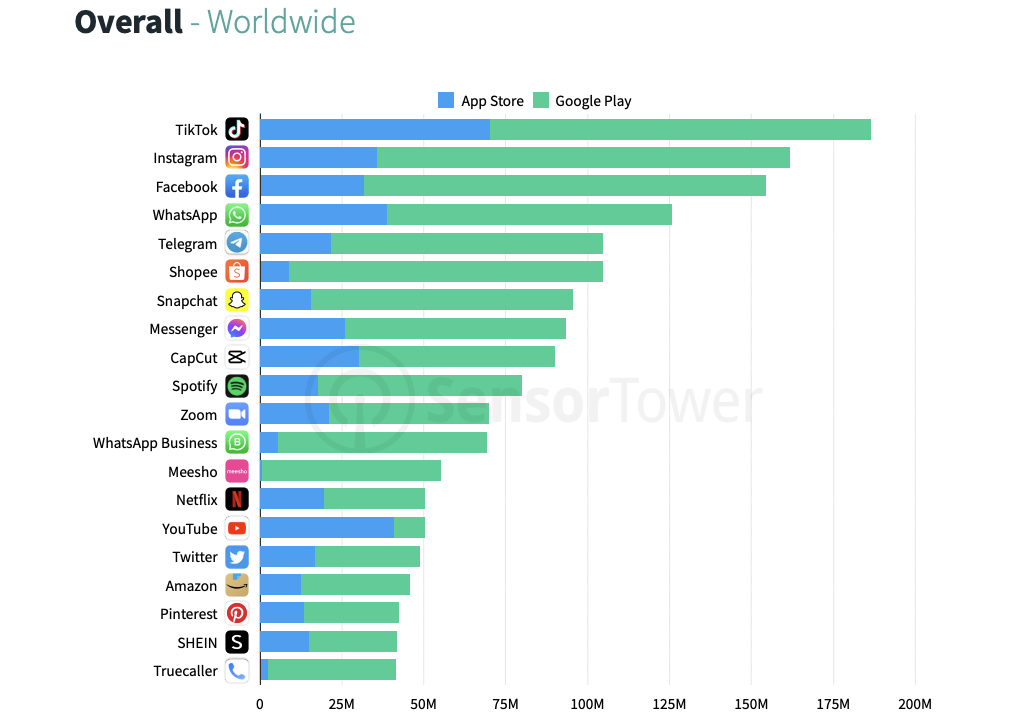
Top Apps by Downloads in Q1 2022 – Image source
There is no end in sight for TikTok’s growth and the success story is far from over. As recently as September 2021, the app was able to announce more than 1 billion monthly users. At the same time, the company is working hard on new features that are meant to continue to attract both creators and advertisers to the platform.
But TikTok has not only shaken up the social media scene, but also many other industries. Music labels monitor the app daily to secure their share of the next viral hit before the artist or song goes through the roof. An analysis by Vox shows that a quarter of all artists who made it into the Spotify charts for the first time in 2020 came from TikTok. Similarly, a third of all artists who signed a contract with a major record label in 2020 can be traced back to a viral TikTok hit.
Never before has a social network produced as many viral moments, hits and videos as TikTok.
Advertising on TikTok
As the popularity of the platform increased, so did the interest of advertisers to present their business to the young audience. Over 67% of TikTok users are 24 or younger. In comparison, the share on Instagram is just under 38%. This makes TikTok the unbeaten platform for businesses to reach and appeal to Gen Z.
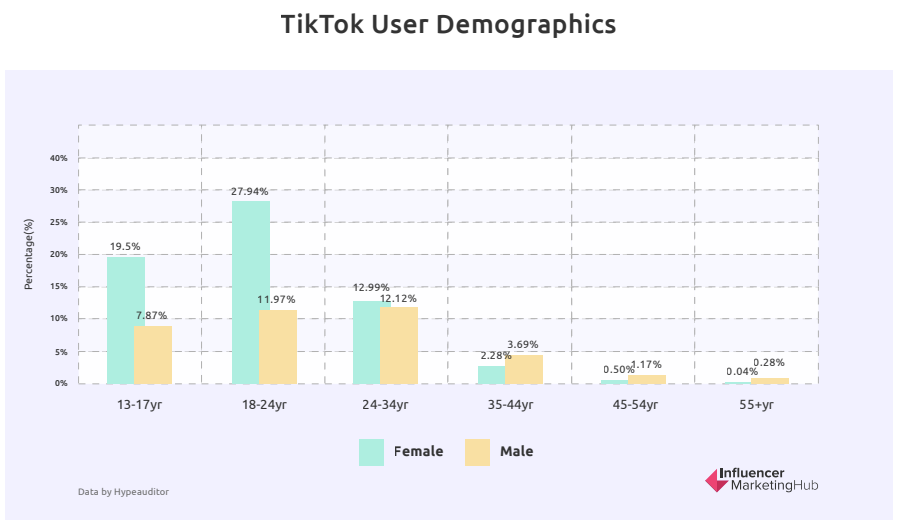
In July 2020, TikTok opened its self-serve ad platform TikTok for Business to all businesses after a long testing period with selected partners.
The interface should look familiar to anyone who runs ads on other social platforms, such as Facebook. You can find similar targeting settings for your audience, including demographics (age and gender), location, device, behavior, and interest targeting.
If you haven’t yet had any contact with TikTok for Business, we recommend the Beginners Guide from Hootsuite as well as SearchEngineJournal for a straightforward and smooth start with your ads on TikTok.
In just 2 years, TikTok has become one of the largest advertising platforms, surpassing Twitter, Snapchat, and Pinterest. It is estimated that TikTok will generate nearly $6 billion in ad revenue in 2022 in the US alone, accounting for over 2% of total digital ad spend.
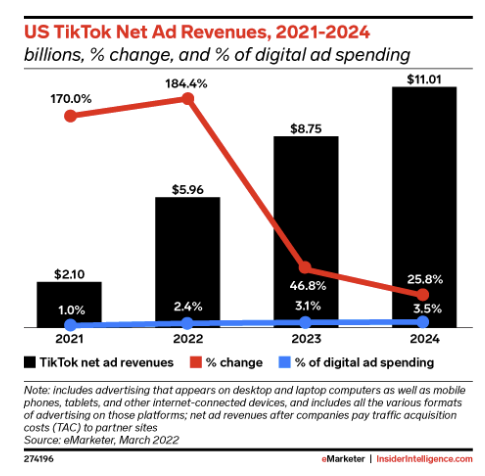
Where popularity goes, scammers always follow
By now it should be clear: Where popularity goes, scammers always follow. We have already seen this in the past on established advertising platforms such as Google, Facebook and the App Stores, but also on various affiliate networks.
And just like its predecessors and contemporaries, TikTok already has a massive problem with scammers, fake accounts and bots. In 2022 alone, TikTok removed:
- Nearly 413 million videos (29% increase vs. 2021)
- Over 256 million accounts (including accounts suspected to be under the age of 13 and fake accounts – 282% increase vs. 2021)
- Almost 160 million fake accounts (increase of over 1,200% (!) compared to 2021)
These numbers are only a fraction compared to Facebook’s total of over 6.5 billion fake accounts removed in 2021. However, with the significant increase of over 1,200% (!) in fake account removal from 2021 to 2022, you can see a clear trend: TikTok becomes more and more popular with scammers.
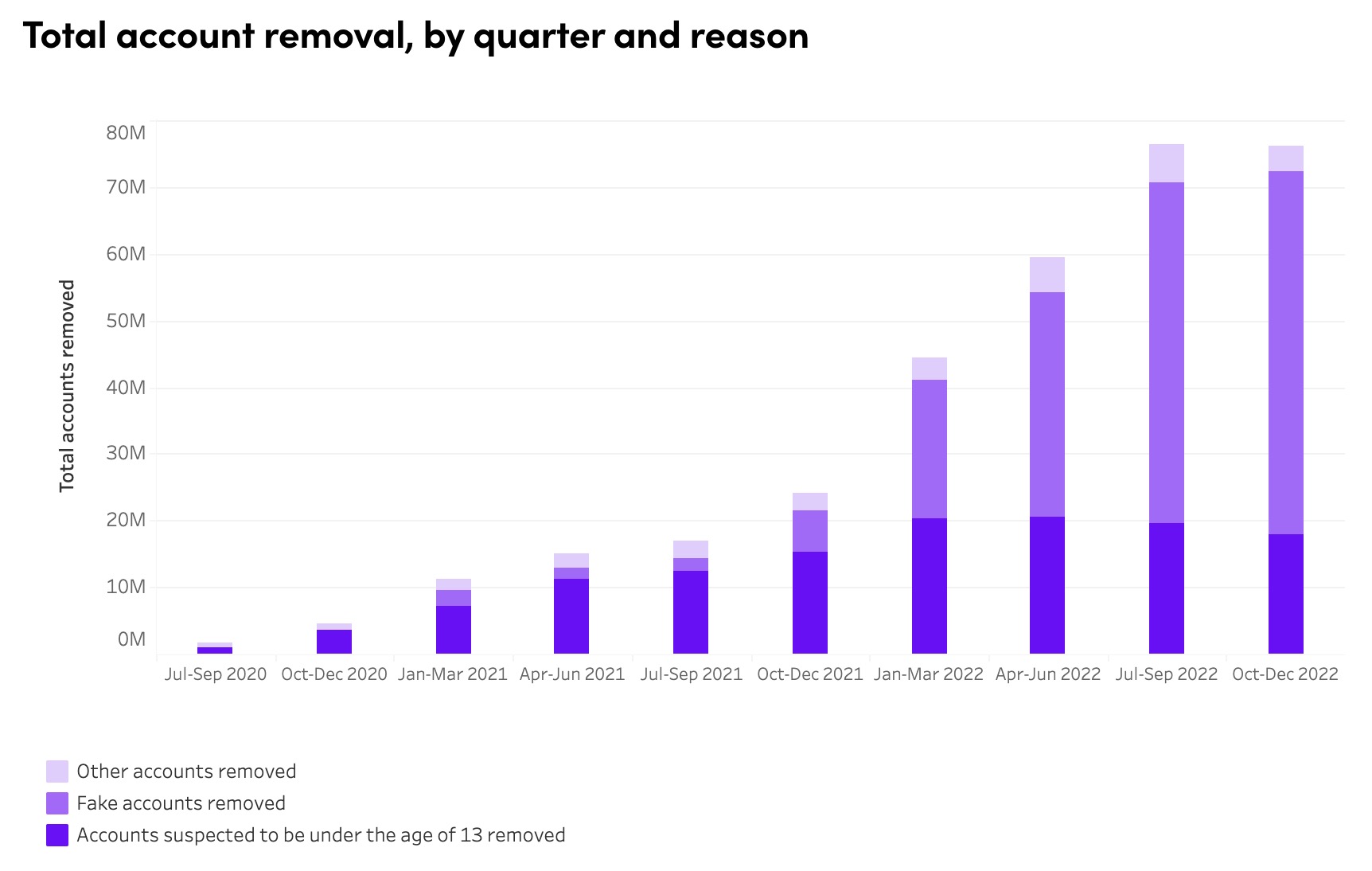
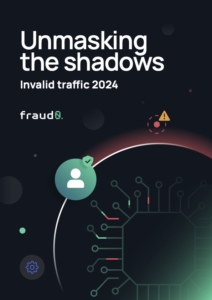
Learn everything you need to know about Invalid Traffic in 2024 based on our customers’ data. Including a breakdown into marketing channels, industries and much more.
TikTok scam accounts
Just like all major social media networks, TikTok has a massive problem with scam accounts. In the following, we will go into more detail about the biggest scams.
Adult scam accounts
One of the first large-scale scams was the so-called “adult dating scam” – how could it be otherwise? For love, many people become blind and no longer act rationally. In the process, the scammers proceed very cleverly: They post pictures of women that they have stolen from other places like Instagram, and lure users from TikTok to Snapchat with the promise of providing them explicit content there.
After directing users to a Snapchat profile, which is also fake, they try to get them to sign up to a dating platform. Once the user signs up, the scammers receive money for successfully referring a new user. They receive the money through the affiliate program of the dating site itself or various affiliate networks. The revenue is around $1 to $3 per referred user. If the users also become paying customers of the dating platform, the scammers can sometimes earn up to $50 for each of them.
But since the scammers are not satisfied with so little money and want to cut out the middleman, after some time they have developed a new scam. Instead of sending Snapchat users to a dating website, they promise them a membership to a limited premium Snapchat account, on which alleged not safe for work (NSFW) photos are supposed to be found. Membership usually costs between $5 and $20 and payment is made directly through PayPal.
It is very unlikely that paying users will ever receive anything in return for their payment. Instead, they are often lured into monthly subscription fees.
How present and big this scheme is could also be seen on this year’s Valentine’s Day. TikTok itself warned its users against scammers with a statement. In 2020, reported losses to romance scams reached a record $304 million, up about 50% from 2019.
(Verified) impersonation accounts
Another scam that works similarly is fake accounts that impersonate other popular users. Entire videos are simply downloaded from the original creator and uploaded to the fake account. In most cases, the caption is then changed. Either the users are advised to follow other accounts, or they are redirected to dubious websites.
These fake accounts are sometimes very difficult to distinguish from their real ones. In some cases, the scammers have managed to even get a “verified account” seal from TikTok for the fake account. How exactly this could happen and why TikTok apparently issued this badge without much control remains unclear.
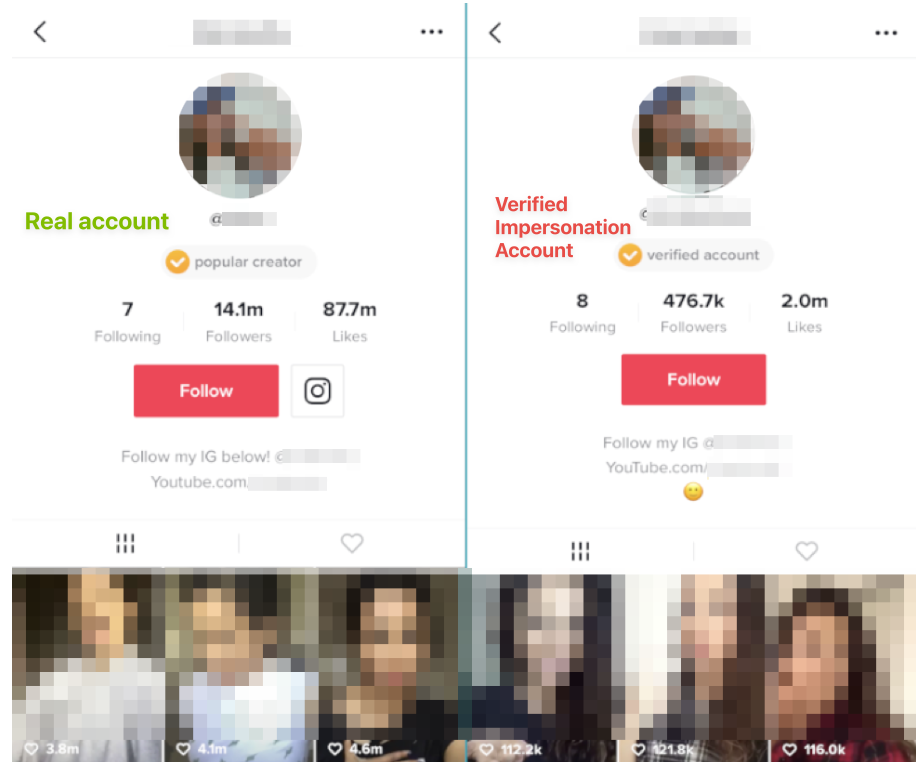
Even if the real creator reports these accounts to TikTok, they are not necessarily deleted. This is what happened to Charlotte Jessop, who talks in her videos about how to best reduce debt and cut spending. With the success of her videos and account during the pandemic, she became an increasingly frequent target of scam accounts that pretended to be her and sometimes contacted her followers to steal money out of their pockets. After she reported various accounts, she was told by TikTok that no violation of their community guidelines was detected and therefore the impersonation accounts will not be deleted.
Get-rich-quick schemes
The Internet, especially social media, is full of get-rich-quick schemes. These scam accounts promise users to make a lot of money in a short period of time with very little effort. All users have to do is install questionable apps on their smartphones and provide personal data or give the apps access to various functions on the device.
Sometimes, users are also lured into potential pyramid schemes, allowing the scammers to gradually get their hands on people’s savings.
In many cases, the advertised apps are infected with malicious code. By granting access to device functions, the scammers gain full control and abuse the device to perform advertising fraud – making the devices a part of a larger botnet.
Users’ personal data, on the other hand, is used for identity theft or sold as data sets on dubious marketplaces.
Free offers with a price
Another example of fraud are supposedly “free” offers, for which users have to deposit their credit card data. These scam accounts promise their followers pretty much everything for free: from nutritional supplements, special diet pills for quick weight loss to unique items for video games.
Even TikTok itself is not exempt from scams. Fraudsters took advantage of the pandemic and used fake accounts called “TikTok Ads Business” or “TikTik Ads Manager” to place ads offering users a $3,000 credit for TikTok For Business.
Similar to get-rich-quick schemes, all personal data including credit card details are misused and also sold on marketplaces.
Low-quality dropshipping products
The last scam we want to take a closer look at is low-quality dropshipping products. Fake accounts offer either supposed products from big brands at a fraction of the price or absolutely overpriced no-name products of poor quality. Remember those ads for massage guns?
In one extreme example, an entire 20-piece cast iron set from Creuset was offered for supposedly only $79.99, even though it normally costs over $1,500.
While dropshipping itself is not necessarily a scam, buyers of products from these fake accounts often do not even receive the product.
Scams on the “For You” page
There are many more scams that take place on social networks and especially increasingly on TikTok. What is special about TikTok, however, is that in the past many such fraudulent videos have found a place on the official “For You” page. The “For You” Page is curated by the TikTok algorithm for each user based on their interests and interactions. It is the second feed available to every user besides the “Following” Page and is a place of trust.
The fact that fraud videos appear in this feed and possibly even go viral should not happen given the size of TikTok. Voices for more moderation by TikTok are getting louder and the network definitely needs to optimize its algorithm and improve the detection of such videos and accounts. In addition, TikTok needs to better verify videos and accounts reported by users.
TikTok’s bot problem is massive
Having dealt with scam on TikTok, we are left with another major area that causes frustration on TikTok and takes money out of advertisers’ pockets: automated bot accounts. Bots themselves can be found on every website on the internet. Today, the majority of all internet traffic consists of automated bot requests (57% due to our own research).
However, with TikTok, two things come together that are explosive: On the one hand, there is a huge supply of companies offering TikTok bots for every imaginable goal. On the other hand, there are countless reports that it is apparently possible to be successful on TikTok with bot traffic and even push videos with fake views to a point where they go viral.
Supply for TikTok Bots is endless
Wherever there is an opportunity to make money through reach, there are tools that allow users to automatically grow their account and increase their audience. We saw Instagram bots rise and fall in the early days, and history is currently repeating itself with TikTok.
In most cases, the bots work as follows:
- You set the target audience guidelines and your custom filters
- The bot takes your input to automate everything: likes, comments, following other accounts etc.
- Through the increased exposure, more people become aware of your account. A small fraction of them are interested in your account and you automatically get new followers.
- The better you set your parameters in which the bot should act automatically, the higher the chance that you will target the right people and they will follow you.
There are many use cases for TikTok bots:
- Accounts with few followers want to increase their reach
- Scammers want to make their fake accounts look more genuine and trustworthy by having more followers
- Users want to build an account in a very specific niche to sell it afterwards
- Users want to push a particular video of themselves so that it goes viral
- and many more
The supply of TikTok bots is almost endless. There are self-hosted solutions that are installed on your own computer, but there are also “professional” companies that offer their service via the cloud at a very affordable monthly price.
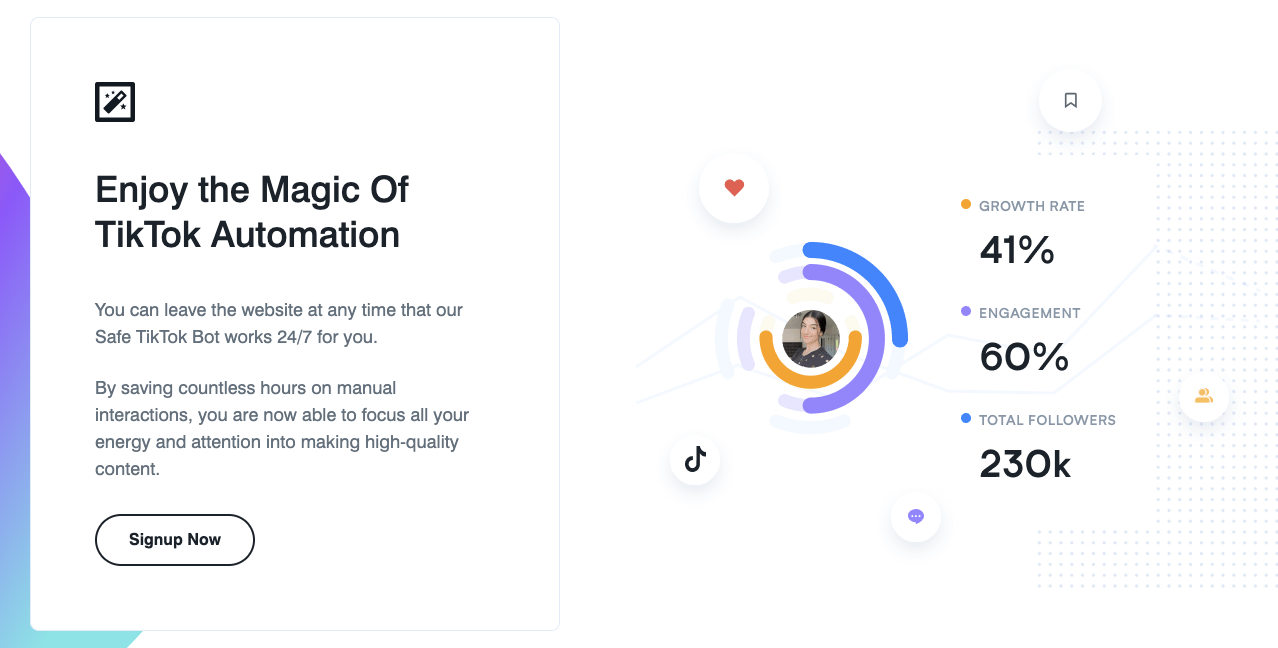
One of these companies is FuelTok. FuelTok allows you to buy likes, views or shares for a video or followers for your account. You can get 5,000 likes for a video for $29.99 and 2,500 followers for your account for $31.99. If you become a regular customer, the costs drop dramatically. As a monthly customer, you get 2,500 likes a day for $49.99 (that’s 75,000 likes a month). All automated, of course.
The success of these solutions is so good that a whole scene has formed that regularly exchanges information about the best TikTok bots, creates top lists and even reports about them on YouTube and blogs. There is currently a real gold-rush atmosphere regarding bots on TikTok.
For a report in 2020, Ghostdata.io wanted to know what happens when you buy views for a video on both Instagram and TikTok. The big question was: Do the platforms’ algorithms recognize that these are fake views or not?
A total of 70,000 – 125,000 views were purchased on both platforms, divided into 3 videos each. The result after 7 days was disappointing. The views were not adjusted for any of the videos, so it can be assumed that both platforms did not detect the bots. In addition, the fake views are included in the statistics as “real” views on both platforms.
“We can therefore say that both TikTok and Instagram apps not only fail to recognize those fake views, but they even count them in their stat data.”
Share Bot – Take your engagement to the next unnatural level
An extreme example of a bot that worked too well was recently the so-called “Share Bot”. Users could obtain shares for their video and thus influence the algorithm and dramatically increase their reach. It got to the point where videos had more shares than views because of the bot, and engagement was out of proportion.
A big problem with these tools is that they also affect accounts that want to stay away from bots. Automated requests or comments affect real accounts of real people. However, these are sometimes lost in a tsunami of automated requests and comments and are desperately seeking TikTok’s support by turning to online magazines, Reddit or via video on TikTok itself.
97% bot traffic from TikTok
There is very little information and statistics about the extent of bots on TikTok. However, our own data does not indicate anything good. During a test phase with several European e-commerce clients from different industries, we were able to identify between 75% and 97% (!) of all users who clicked on an ad as bots. This is frightening in that advertisers on TikTok lose almost their entire advertising budget to bots.
Protect your ad spend on TikTok
With this article we aim to give you a first impression of TikTok as an advertising platform including both positive and negative sides.
There is currently no platform that companies can use to better address Gen Z, and no social network is currently as hip and trendy as TikTok. But all that glitters is not always gold. As with many other platforms, TikTok is also home to various scammers and bot providers whose fake accounts not only distort engagement metrics, but can also cost advertisers a lot of money.
Since bots are programmed to interact with videos from certain topics and followers, they also click on ads, sometimes consuming a large portion of the advertising budget. As long as TikTok does not enforce its community guidelines more strongly, introduce stronger control mechanisms, and check reported accounts more thoroughly, scammers and bots have free play.
With so many fake accounts and fake clicks on your ads, it is absolutely critical that you protect your advertising budget if you want to advertise on TikTok.
Sign up for a free 7-day trial with fraud0 today and see the results for yourself – no strings attached and no credit card required.
- Published: June 27, 2022
- Updated: November 28, 2023
1%, 4%, 36%?
